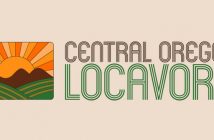(Example of Utility Scale Solar Farm | Photo Courtesy of Shasta Power, LLC)
Can you make an impact by investing in large-scale solar power locally? How about a renewable project that could power Bend and make an outsized return? These are the questions I asked myself as I was searching for a way to make sense out of my work life.
I was sitting on the bank of the Columbia River just below The Dalles Dam about 4pm one summer afternoon. The water level started to rise. It kept rising. There are several dams located between The Dalles and the Pacific Ocean so this wasn’t the tide. This late afternoon water level rise meant one thing; Southern California’s air conditioners were running full tilt and needed more power. They had exhausted local power sources and the utility must have made the call to the dam operator to let more water go. I got to thinking about all the coal plants shutting down, the drought, the uncertain natural gas production and the global CO2 problem. Everything came into question. What would happen if the Columbia River ran out of water too? Where will we get our electricity when fossil fuel plants are closed? There is an electricity shortage coming. This is a good time to get into solar development.
Back in 2018, my solar land team (Max Roe and Ansley Dunning) joined forces with a solar developer, Base Energy, LLC, in Los Angeles to see if we could develop a utility scale solar farm together. Everything in the news said one thing: everywhere starting with Southern California will need more solar power soon. My team had experience leasing solar land for solar developers. Base Energy LLC had experience permitting projects and negotiating energy contracts. It was a good fit. Together we started studying substations and 1,000 acre plus land areas suitable for solar. We found a municipality that was business friendly with plenty of raw land. We raised approximately $2.5M from accredited investors, did the early development work and then sold the development to a larger firm who has the credit and experience to build it. For me, this helped answer the two nagging questions I started with.
- The project could power a city approximately the size of Bend.
- Investors are making multiples on their impact investment.
So now what? At the time of this writing, fires are blazing, Bend is choking on smoke, CO2 is ever rising and the nagging questions keep coming. Can we make a bigger impact? My partners are ready to go again and investors have started funding the plans. We now have a unified brand; Shasta Power. Shasta Power has identified over ten new utility solar sites to develop in Oregon, Idaho and Utah. We are proceeding with the early stage development with the aim of narrowing the list down to the best three or four sites.
I don’t know when the overarching questions will be fully answered or whether the work we are doing will make the impact we need in the time frame we need it to. All I really know is that this is by far the highest impact we can have on our immediate future, and by working together we are leveraging the skills of a great team to implement the best solutions available to us today. And yes, answering these questions in a meaningful way helps make sense of everything.
John Copyak — Shasta Power Partner
Max Roe — Shasta Power Partner
Boris Feldman — Shasta Power Partner





